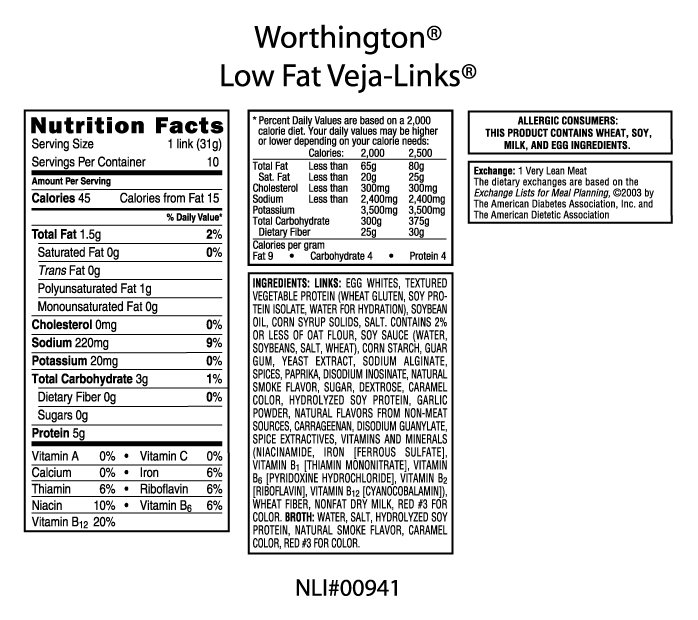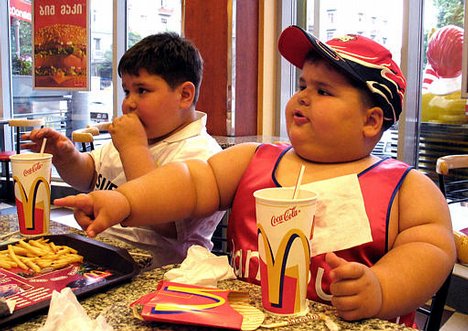 Last week, Slate published an article claiming that -- counter to popular assumptions -- the pesticide levels on most of the produce we eat are nothing to worry about. The title says it all: "Organic Shmorganic: Conventional Fruits and Vegetables are Perfectly Healthy for Kids."
Last week, Slate published an article claiming that -- counter to popular assumptions -- the pesticide levels on most of the produce we eat are nothing to worry about. The title says it all: "Organic Shmorganic: Conventional Fruits and Vegetables are Perfectly Healthy for Kids."
In one sensational, simplistic article, author Melinda Wenner Moyer appears ready to undermine the 50-year battle that organic food advocates have waged against an increasingly monolithic industry to provide healthy, uncontaminated food. In the piece, Moyer concludes that conventionally grown produce that harbor pesticide residue are not harmful for kids and are not much worse than their organic counterparts.
Moyer points to the fact that organic farms often use pesticides of their own. However, she also admits that most organic pesticides break down in the environment more easily and are less likely to contaminate the soil and water. That alone is a good enough reason to support organics since runoff from agriculture is the number one polluter of America's waterways. Also, by Moyer's own admission, pesticides are used in organic agriculture as a last resort, limiting our exposure even further.
Moyer asserts that since synthetic pesticides are engineered to be used in smaller quantities, that might also somehow make conventional food less toxic overall than organic. But this sounds like the industry talking -- why wouldn't we seek to further regulate all toxic substances on our foods, whether organic or not, rather than concluding we might as well eat the conventional foods?
Beyond Residue
When Moyer says that pesticides are "perfectly healthy for kids," she doesn't specify whose kids. It's clear that she hasn't considered farmworkers' families and those who live near agricultural fields. These populations are routinely exposed to large quantities of pesticides and are greatly impacted.
Moyer claims she is focusing primarily on the heath effects of consumers. But the logic of separating our own health from environmental health and worker health is specious. Just ask farmers.
Kira Kinney, an organic farmer in New Paltz, New York, finds Moyer's compartmentalized argument especially troubling. "The author says she is only looking at this narrow window of residue on produce, but I do not understand, as a grower, how one can break apart the farm process to only look at things in such narrow focus," says Kinney.
Kinney sees Methyl bromide -- a fumigant that is being phased out in produce production, but is still in use on some farms -- as a good example. "It is applied to the soils of most conventional strawberry farms -- and other produce [farms] as well. It basically kills everything living in the soil, and makes lots of people sick in areas where this gas is being pumped into the soil," she says.
Even if we focus strictly on the direct health effects for consumers eating produce grown with pesticides, Moyer makes gross oversights. She starts the article off by saying, "I can't help but wonder whether giving my son organic food really makes a difference to his health, considering that he's been known to lick the bottom of his shoes, kiss my poop-sniffing dog, and eat crackers -- someone else's -- off of the preschool floor."
In fact, these are two completely different issues. Recent science on the microbiome, or bacteria in and on our bodies, shows that kids who grow up with dogs have a healthier microbiome and exposure to a variety of bacteria likely helps to improve our immune systems. But this has absolutely nothing to do with pesticides.
Or perhaps it does. There is evidence to suggest that one pesticide, glyphosate, the ingredient used in the ubiquitous Roundup may disrupt and kill beneficial bacteria in our guts leading to impaired immune function and a cascade of ill health effects.
This shouldn't come as a big surprise since pesticides, insecticides, and fungicides work to kill organisms indiscriminately. There are also numerous studies that show use of these various "cides" disrupts soil microflora, so why not our own as well?
Dose: Not as Straightforward as You Think
The basis of Moyer's argument is that "the dose makes the poison" when it comes to the toxicity of pesticides. This concept is the cornerstone of toxicology and many toxicologists will tell you that's all there is to it: Ill effects occur along a linear curve depending on how much of the toxin one is exposed to. However, much of the conventional thinking on this matter is being overturned.
I asked Dr. Bruce Blumberg, a professor of developmental and cell biology and pharmaceutical sciences at the University of California, Irvine, about this theory. Blumberg works with endocrine disrupting chemicals and many pesticides fall into this category.
"Endocrine disrupting chemicals most assuredly work at low doses that produce what we call "non-monotonic," or nonlinear, dose responses," Blumberg says. "There are many cases where a low dose of a chemical has one effect, whereas a higher dose either has no effect, or an opposite effect."
The idea that the dose makes the poison, says Blumberg, "makes the assumption that the dose-response curve must be linear. As even laymen know, there are precious few responses in nature that are linear."
Since toxicologists assume the linear dose response, the EPA rarely, if ever, tests for what exposure at lower levels may mean. But in Blumberg's research, he routinely finds effects on the development of fat cells and the prevalence of obesity at levels near to or below what's known as the "no observed adverse affect level" (or NOAELs) and sometimes at or below the EPA-established tolerable daily intake.
In one study Blumberg found that the fungicide triflumizole caused changes to fat cells, and increased fat cell size at levels 400 times below the EPA approved NOAEL and four times lower than the tolerable daily intake.
Furthermore, Moyer relies on the Environmental Protection Agency's (EPA) data to back up her claim that pesticide residues are harmless. This is a huge oversight since the process by which pesticides receive EPA approval is riddled with conflicts of interest. Blumberg described the process like this: The EPA asks companies that are introducing new chemicals to perform basic tests, including tests for carcinogenesis and reproductive harm, for example. The company then performs these tests in-house or asks a contract laboratory to do them and shows the data to the EPA.
"Despite this clear conflict of interest, the EPA says, 'thank you very much,' talks about the issue for a while, and then either approves, or disapproves the chemical for use based on the industry supplied data, which may or may not be complete," says Blumberg.
Very Little Human Data
Another key point is that the EPA makes its safety determinations without any human data. Thomas Zoeller, a biology professor at the University of Massachusetts Amherst, says that, "Because humans are exposed to lots of things, you can't get a cause-effect sense for a single pesticide. So, when they make a 'safety' determination, it is without the benefit of human data."
Blumberg added that the EPA rarely tests these chemicals directly, nor conducts an independent investigation. Instead, the agency often performs computer modeling studies that estimate what an average person might consume based on assumptions about the residues on food. (These models are what Moyer refers to in the Slate article.)
However, the EPA does not ever test the exposure levels actually found in consumers. Nor does it look at levels in those applying the pesticide, nor their families, nor those who live close to where these pesticides are applied. In other words, Blumberg says, "Populations are never sampled to assess whether exposure falls within the range predicted by the modeling studies."
Zoeller says that the EPA's capabilities are severely limited due to built-in industry protections. "[The EPA] have been given the task of evaluating whether a chemical is harmful, not if it is safe. The statute protects the industry, not the consumer. EPA is caught in the middle."
Zoeller added that Moyer's article makes the mistake of claiming "safe levels" of pesticides. "I doubt seriously that EPA risk assessors would say it like that. They would say that according to the data they have, 'levels of exposure below X should not produce adverse effects.' There's a big difference," he says.
Pesticides' Combined Effects
Moyer seems to be arguing that since we are exposed to so many toxins on a daily basis, pesticide residue makes little difference. That's a dangerous assumption. In fact, limiting our exposure to pesticide residue on food, whenever possible, is smart precisely because
it's one factor we can control.
What's more, Moyer's article makes no mention of the combined effects of these toxins. One 2011 study found that the widespread decline in male reproductive health may be linked to increased exposure to a combination of pesticides, which have not been adequately tested.
Another 2012 study found that the combined effects of widely used pesticides exceed the effects of individual pesticides. To date, there is not nearly enough data on these combined effects, even though the average American is exposed to 10 or more pesticides every day, through food and drinking water.
These dangers are especially worrisome for children and pregnant women. In fact, the American College of Obstetricians and Gynecologists recently warned about the dangers of exposure to pesticides and other toxins, as the average woman is exposed to an estimated 163 unique chemicals per day, according to the Environmental Working Group.
The bottom line is that most data that suggests pesticide residue is safe is the result of a deeply conflicted regulatory system. Under our current system, we rely on the companies manufacturing these chemical to find them dangerous, rather than an independent entity to prove them safe. As such, these chemicals have never been deemed safe for children, expectant mothers, or anyone else at the doses most Americans are currently being exposed to.
We now know that low levels of these toxins can adversely effect our microbiomes and our reproductive health, while increasing the risk of obesity. So why not err on the side of caution?
Indeed, as Blumberg puts it, "If we wait for such proof [in humans], despite numerous animal studies that should have alerted us to the potential dangers of specific chemical exposure, we have utterly failed to protect the public."
A version of this article first appeared on Civil Eats.


















 My latest radio interview with Dr. Robert Zieve on
My latest radio interview with Dr. Robert Zieve on 

